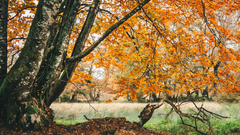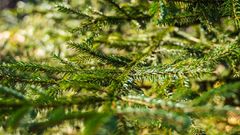
European crab apple: characteristics, use & symbolism
The European crab apple tree, scientifically known as malus sylvestris, grows mainly in temperate regions, is known for its beauty and its edible fruits.
European crab apple
Commonly known as the European crab apple, and scientifically Malus Sylvestris, it belongs to the Rosaceae family, of which there are around 20 species across Europe, Western Asia and North America. It mainly grows in temperate regions of the Northern hemisphere. The tree has long been valued for its fruit, its many medicinal properties, as well as its symbolic value.
Why EcoTree plant European crab apple trees
We plant the European crab apple tree as a diversification species to enrich the biodiversity potential and resilience of our forests. The tree helps preserve biodiversity (insects, birds, etc.) by naturally creating habitats and food for flora and fauna, e.g. when the tree blossoms and since carry apples.
European crab apple - Overview
European crab apple - Overview

European crab apple - Species requirements
The European crab apple tree thrives best in temperate climates, preferring sunny areas with well-drained, fertile soil. To achieve the most optimal growth, the European crab apple tree needs at least 600 mm of water per year. Moreover, for optimal growth and fruiting, it should not be planted above an altitude of 1,500 meters.
European crab apple tree's timber
Timber from European crab apple is renowned for its beauty and durability. The wood is distinguished by its light colour and fine grain. Renowned for its exceptional acoustic quality, it is widely used in the manufacture of musical instruments. It can also be used to make high-quality furniture, kitchen utensils and decorative objects.
Symbolism of the European crab apple
The European crab apple tree symbolises the potential for renewal and growth after periods of difficulty or dormancy. This is what makes the tree the ideal eco-responsible gift for any occasion!
Our selection of trees
Our goal is to enable anyone to do something that benefits nature and helps us to live in a more harmonious world. So why not become a tree owner in a European forest and help combat climate change?






Please note that this is promotional communication. See our notice of information.









